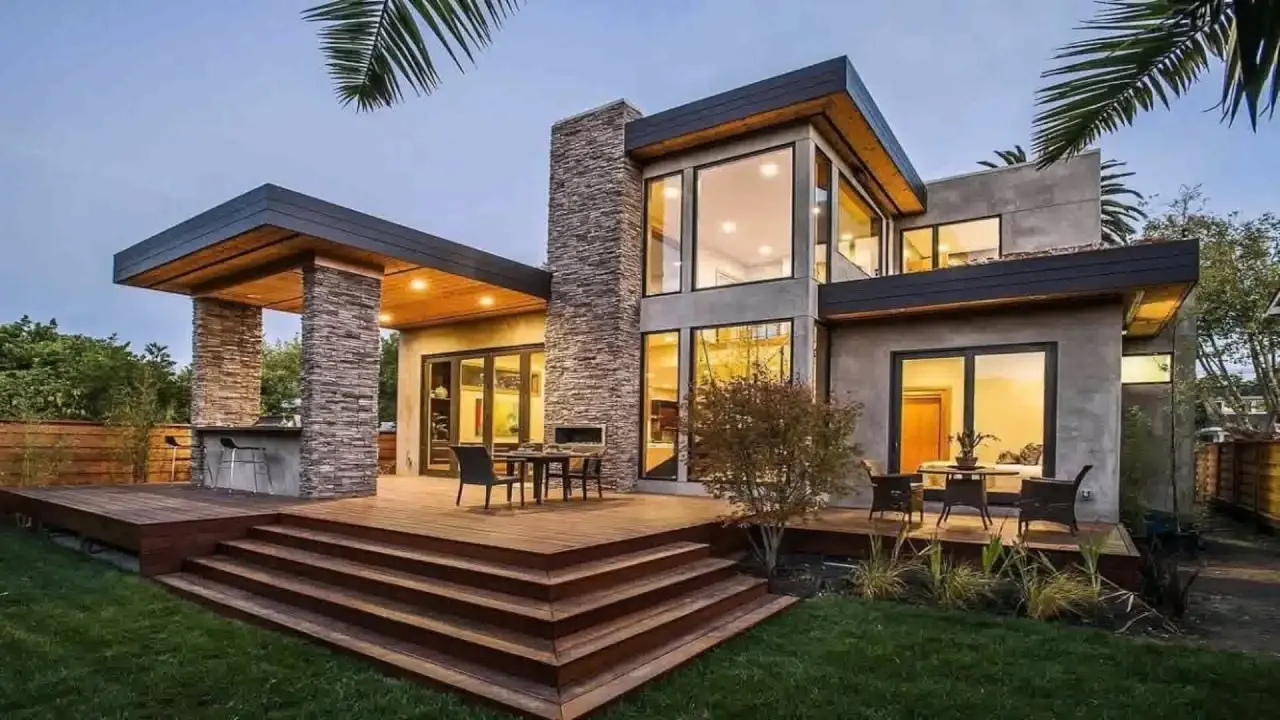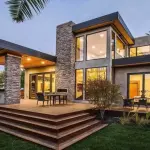Explore Our Exciting New Property Listings Now Available in Prime Locations!

How to Design a House Interior: A Step-by-Step Guide
Interior designing of the home is a thrilling task because the creativity of an individual comes into play in this process. Be it entering a new house or renovating the present space, the way one does the interior makes all the difference in the feel and function of one's home. Starting from the selection of color to choosing the furniture and decoration, many things are to be considered. This guide will walk you through the steps to be considered in designing your home's interior, ensuring that your space reflects your individual style and is practical and comfortable.
1. Be Aware of Your Needs and Preferred Style
It is important to identify, before doing the actual design, what you actually need and what your preference in terms of style is. Consider how you will be using each room. Would the living room be one to relax in, or would you need space to entertain guests? Is your kitchen the heart of the home, or do you go for a minimalist look with plenty of counter space? Knowing these needs will help determine the type of layout, furniture, and decor.
a. Define Your Style
Whether modern, traditional, minimalist, industrial, or eclectic, your design style will drive many of your decisions. Flip through magazines, then Pinterest boards or Instagram, and compile a mood board that represents your style.
b. Assess the Room
Note the size and shape of a room, among other instant features, like the number, positions of windows, and lighting. To bring it all together, one has to understand the architectural aspects of each room as to how these design choices will complement and not overpower a space.
2. Begin with a bold Colour Scheme
Colour is one of the significant aspects in interior design. The Colour someone chooses for a house dictates the mood throughout that house and may even impact the mood and perceived size of that place. For instance, light-coloured colors create the illusion of a little room feeling much bigger. Dark colours have the opposite effect, making a room intimate, small and cozy.
a. Select a Primary Color
A neutral base color is applied to walls and huge pieces of furniture. White shades, gray, beige, or soft pastels work better since they are timeless and versatile. Neutral tones also allow leeway in adding color pops with accents and decors.
b. Add Accent Colors
Once you have your base color in there, add accent color in with pillows, artwork, rugs, and other accessories. Now's the time to get creative and put some personality into the space. Accent colors that are super popular are jewel tones, soft blues, even bold colors like mustard yellow and deep green.
Balance within your design follows the use of warm tones balanced with cool tones. Warm tones would include reds, yellows, and oranges; cool tones would include blues, greens, and purples. Where there is a mix present of both warm and cool colors, that is where you will find a well-rounded, comfortable space.
3. Space Planning and Furniture Layout
The arrangement in a room determines its functionality and aesthetic appeal. Planning the layout includes the understanding of the room's flow, space optimization, and whether the design will serve the intended purpose.
a. Measuring the Room
Before buying furniture, measure your space. Ensure that whatever furniture you will choose will fit well in a room with spaces spared so you may not end up over-crowding a room. Allow ample room for walking comfortably and other motions.
b. Consider Functionality
Every room in your house serves a different purpose, and hence the furniture in each should be different. Emphasize comfortable seating in the living room and have a coffee table that is easily accessible. In the dining area, put enough seating to accommodate your family and guests but do not compromise with the space.
c. Create a Focal Point
Each room should have one focal point, which could include a fireplace, large window, a statement piece of art, or an accent wall. You will set your furniture based on this so that attention will be drawn to one cohesive design.
4. Lighting Matters
Lighting is always one of the more passive concerns when it comes to interior design, though it is so very vital when it comes to setting up both mood and functionality in a space. The right lighting can make your space feel warm and inviting, and even larger than it may actually be.
a. Layer Your Lighting
Typical layers of lighting in a well-designed room would have ambient or general lighting, task or lighting for particular activities, and accent or highlighting, and normally include ceiling lights, floor lamps, table lamps, and under-cabinet lighting to add depth and warmth.
b. Draw upon natural light
Wherever possible, allow maximum natural light in. Large panes of windows, skylights, and glass doors all can contribute to the creation of openness and airiness. For rooms where there may not be as much natural light, strategic placement of mirrors will help reflect light and illuminate the space even more.
c. Use Dimmable Lighting
Dimmable lighting allows you to make changes in brightness, by time of day or personal mood. This can surely be helpful in the living room or bedroom where you want softer lighting in the evening.
5. Decor and Personal Touches
With the bigger elements-color, layout, and lighting-already tackled, it is time to add those personal touches that will truly make your house feel like a home. This is where decor comes in.
a. Add Textures
This will help add texture and depth to your design. You can layer rugs, add throw pillows, or mix furniture in a range of materials, such as wood, metal, glass, or fabric.
b. Incorporate Art and Decorative Elements
Give your room personality through artwork, plants, and other decorative accents. Whether it's a gallery wall, a statement sculpture, or perhaps a grouping of vases, select items because they speak to you through reflection of your personality.
c. Add Plants
Add some greenery for a super simple, budget-friendly way to inject some life into your space. This would purify the air in the area, adding that refreshing touch to soothe the senses. You can opt for low-maintenance succulents or large-leafy plants that assure a greater effect.5. Decor and Personal Touches
With the larger elements-color, layout, and lighting-already addressed, it is time to add those personal touches that truly will make your house feel like a home. This is where decor comes in.
6. Storage Solutions
Storage is one of those elements in interior design that gets overlooked very frequently. The trick to keeping your home organized, clutter-free, yet still managing to look stylish, is through effective solutions for storage.
a. Built-In Storage
Consider adding built-in shelving units or cabinets for space optimization. These can be for both storing and decoration purposes, such as books, photos, or keepsakes of some sort.
b. Multi-Functional Furniture
Use furniture with built-in storage, when possible: ottomans that can hide a space inside them, beds with drawers inside, or even coffee tables that open up and provide more space.
7. Finishing Touches: Editing and Refining
Interior designing a house is one big process, and in those processes comes the time when one needs to step back and review his or her work. Many times, less is more. You really mustn't clutter your space with too much furniture or too many decorations; these might make the room feel chaotic and uncomfortable.
a. Declutter regularly
Once you have completed your design, remember to leave it clean: clean the clutter on a regular basis. It will keep the area nice, functional, and beautiful.
b. Rotate Decor Seasonally
Switching decor with the seasons keeps the house feeling updated and fresh: cozy warm-toned blankets for winter, while in summer it's worth focusing on lighter fabrics with bright colors.
Related posts:
The real estate industry offers a wide array of lucrative careers, catering to a diverse set of skills, interests, and professional goals. Whether you're driven by sales, finance, legal expertise, or management, there are many paths to success. One of...
In the fast-paced world of real estate, the right platform can make all the difference for buyers, sellers, and renters alike. Whether you're looking for a dream home, a vacation villa, or an investment project, real estate websites have revolutionized...




 The Highest Paid Jobs in Real Estate
The Highest Paid Jobs in Real Estate
 The 7 Best Real Estate Websites of 2024
The 7 Best Real Estate Websites of 2024
 List of Common Building Materials Used in Construction
List of Common Building Materials Used in Construction
 How to Design a House Interior: A Step-by-Step Guide
How to Design a House Interior: A Step-by-Step Guide
 Explore Different Styles of Architecture: A Journey Through Time and Design
Explore Different Styles of Architecture: A Journey Through Time and Design